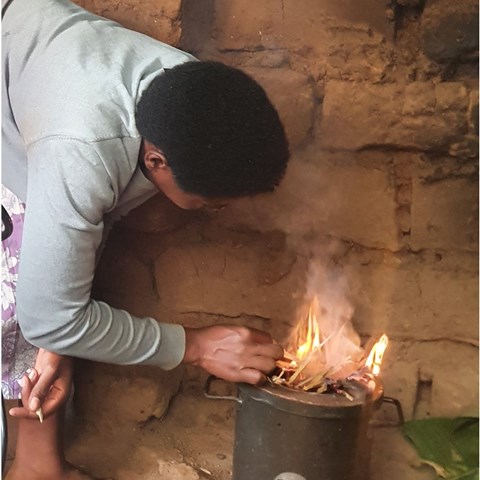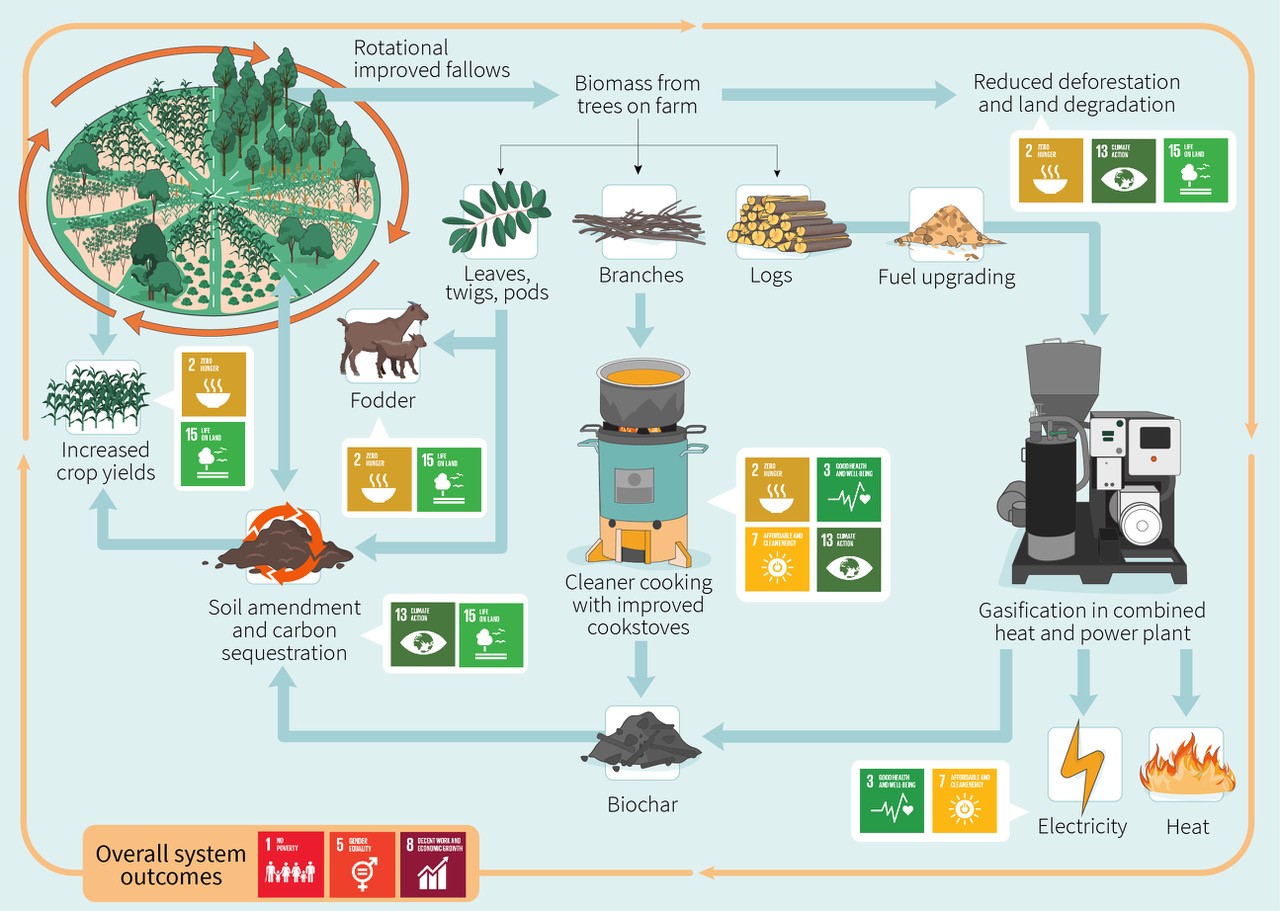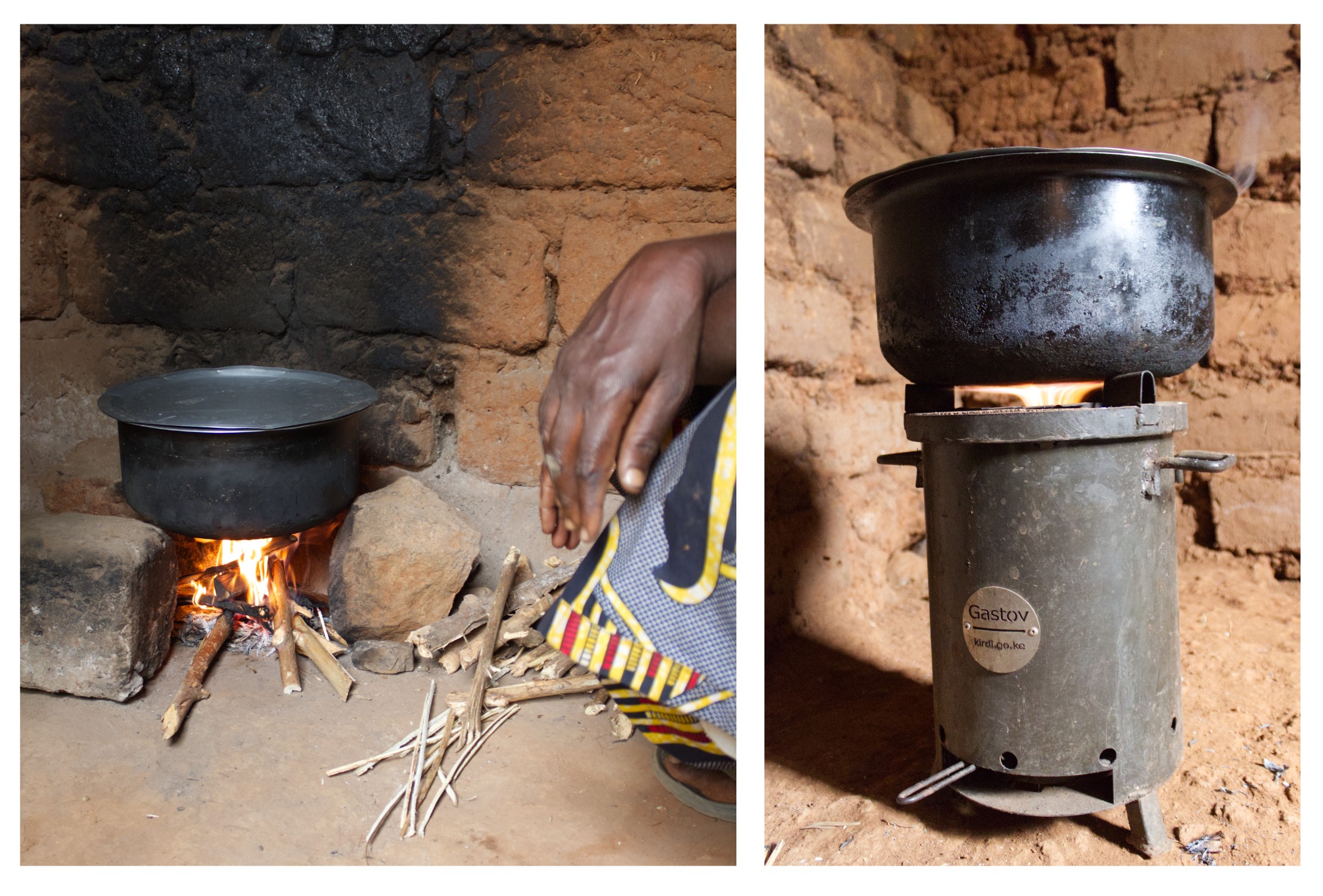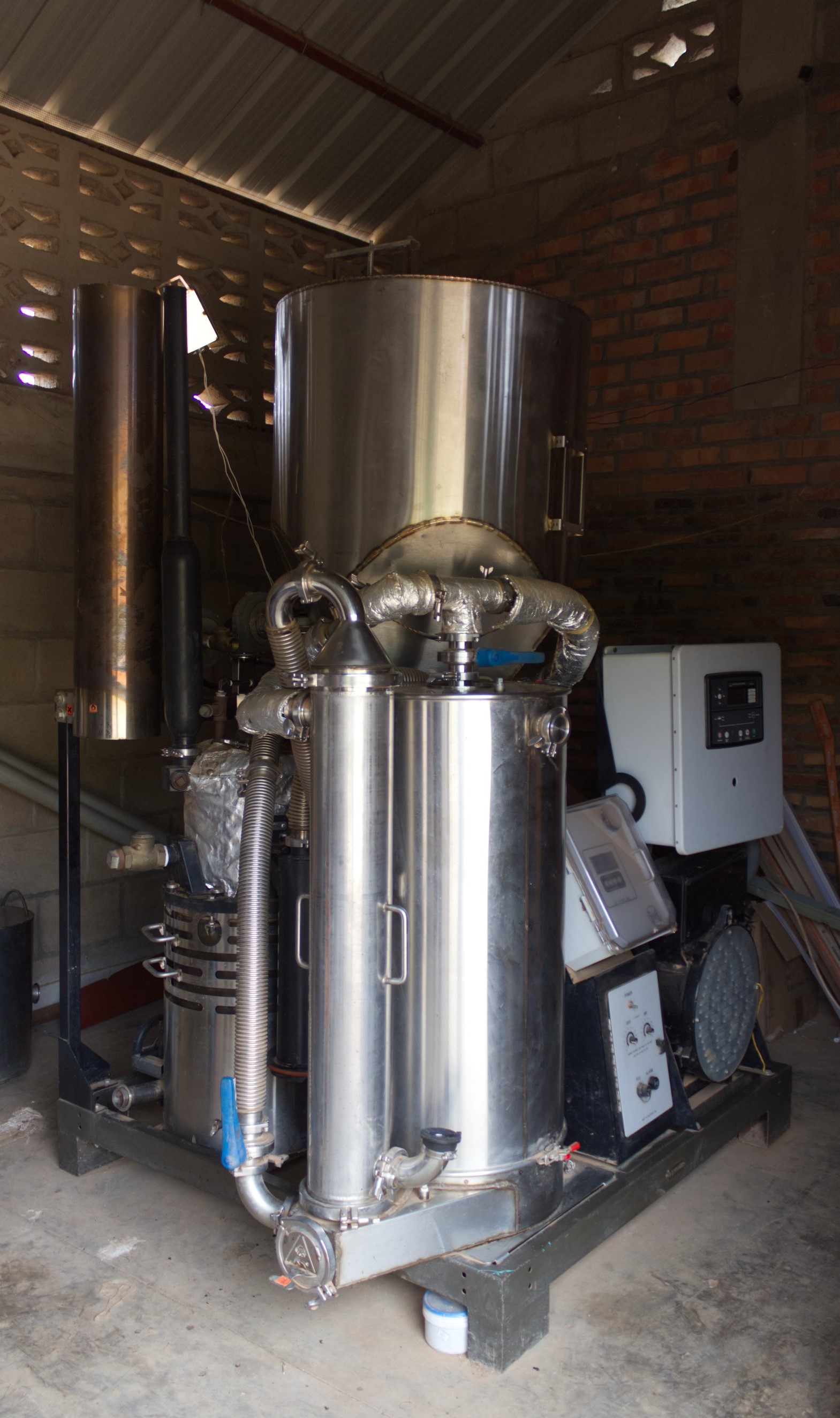Contact
Aida Bargues Tobella, Researcher
Department of Forest Ecology and Management, SLU
aida.bargues.tobella@slu.se, +46907868346

A new study shows multiple benefits of combining sustainable biomass production in agroforestry systems with cleaner cooking solutions and electricity production in sub-Saharan Africa.
Most of the people in sub-Saharan Africa lack access to electricity and clean cooking. Energy poverty is multifactorial and unevenly distributed, with rural communities being the most affected.
Commonly, most people rely on traditional cooking options, typically placing the cooking pot on top of three stones placed on the ground between which a fire is lit, known as the 3-stone fire. Traditional cooking appliances are inefficient and lead to high emissions, resulting in negative health and environmental impacts. These cooking appliances are supplied with firewood collected on adjacent forest and woodlands, contributing to deforestation, land degradation, and biodiversity loss.
Agroforestry systems -where trees are grown on the same land used for agricultural crops or livestock in a temporal sequence, or simultaneously- can provide sustainable biomass for energy purposes. Agroforestry can have several positive impacts such as increasing crop and livestock production, improving soil health, and enhancing food security. Combining agroforestry with bioenergy solutions can address the interconnected energy, poverty, food, water, climate, land, health, and biodiversity challenges.
A perspective article published recently by researchers at SLU, Umeå University, and Sokoine University of Agriculture estimates the biophysical potential of combining sustainable biomass production in agroforestry systems with cleaner cooking solutions and electricity production for rural communities in sub-Saharan Africa.

Illustration of the proposed agroforestry-bioenergy system. The system combines biomass production in rotational improved fallows, cleaner cooking solutions, and electricity, heat, and biochar production in combined heat and power plants. Outcomes from each of the system components (blue arrows), all directly contributing to the achievement of SDG 7, SDG 2, SDG 3, SDG 15, SDG 13. Overall system outcomes contribute to the achievement of SDG 5, SDG 1, SDG 8. Source: García-López et al. 2024.
In the proposed agroforestry-bioenergy system, branches are used to fuel cleaner cooking appliances, which have lower fuel consumption and better emission performance than the traditional 3-stone fire. This reduces exposure to pollutants, and environmental effects related to biomass sourcing and emissions. Natural draft gasifiers, one type of cleaner cooking appliances, also produce biochar. Biochar is the product of biomass carbonization and can be used in different applications, while sequestering carbon. For example, biochar has been proven to be an efficient soil amendment with potential to improve soil fertility and crop yields. The branches produced in each farm will not only be enough to cover the cooking energy needs of the household, but there will also be a fuel surplus.

Cooking appliances. Left, the rudimentary and most commonly used 3-stone fire setup. Right, Kenyan-manufactured natural draft gasifier cookstove. Photos: Natxo García López.
“As fuelwood becomes increasingly scarce, households -typically women and girls- are forced to purchase fuels or walk ever-increasing distances to gather wood. By growing trees on farms, households have access to fuelwood and the pressure on surrounding forests and woodlands is reduced” Aida Bargués-Tobella, SLU.

Combined heat and power plant. The gases produced during the gasification of biomass (e.g., woodchips) are combusted in an engine used to run a power generator. Photo: Natxo García López.
In addition to the generated electricity, 180 MWh of heat and 6 tonnes of biochar would also be annually produced in the combined heat and power plant. Access to electricity does not only allow households to power lighting and small appliances, but also allow health care centres to refrigerate vaccines and power basic instrumentation, as well as promoting local economic activities such as stores and hardwares.
“In Sub-Saharan Africa, 556 million people live in multidimensional poverty, the vast majority of whom are in rural areas. Our integrated agroforestry-bioenergy system explicitly targets these rural communities and contributes to improved well-being and poverty reduction.” Natxo García López, Umeå University
The implementation of this system has the potential to improve the living standards of rural communities due to increased energy security (improved access to electricity and clean cooking), and improved health (reduced household air pollution and enhanced food and nutrition security).
“We hope that building integrated, self-sustaining, and economically sound systems will become the new kind of development, where finance is only needed for initial investments in equipment (e.g., improved cookstoves and a bioenergy plant), capacity building, and enabling the transition during the first few years.” Rosa Goodman, SLU.
“We envisage that the woodfuel market will drive the transition to this agroforestry-bioenergy system”. Gert Nyberg, SLU.
Even with conservative assumptions, the study shows that the proposed system offers great potential to provide cleaner energy for rural communities in Sub-Saharan Africa and generates multiple positive outcomes.
Aida Bargues Tobella, Researcher
Department of Forest Ecology and Management, SLU
aida.bargues.tobella@slu.se, +46907868346
García-López, N., Bargués-Tobella, A., Goodman, R.C. et al. An integrated agroforestry-bioenergy system for enhanced energy and food security in rural sub-Saharan Africa. Ambio (2024). https://doi.org/10.1007/s13280-024-02037-0